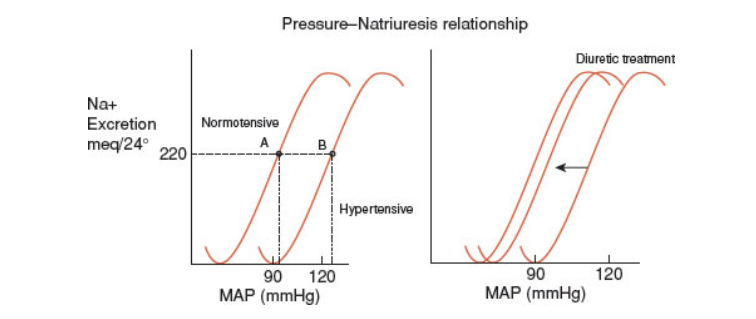Understanding hypertension
Jul 24, 2024, 01:58 PM
Physiologic context of hypertension

Pressure Natriuresis Curve
Despite the natriuretic handicap of hypertension, edema and volume expansion are not present because the elevated blood pressure compensates for the renal sodium avidity and permits the maintenance of sodium balance and a normal plasma volume.
The natriuretic handicap of hypertension is best understood in a physiologic context. Precise regulation of blood pressure around a “normal” value is not a high priority. Maintenance of an adequate circulation, critical organ perfusion, and normal plasma volume are high priorities. Unlike serum sodium, or pH, or tonicity, blood pressure varies considerably throughout the day under normal circumstances. For instance, blood pressure increases with exercise and falls during sleep.
High blood pressure is a long-term, but not a short-term risk, while plasma volume regulation requires precise short-term regulation. A small mismatch in sodium intake and excretion may be fatal, resulting either in shock or pulmonary edema. High blood pressure, therefore, represents the triumph of volume over pressure in the physiologic regulation of circulation. This is an example of the “wisdom of the body,” a phrase coined by Walter Cannon. High blood pressure enables the individual to excrete the day’s sodium intake and maintain sodium balance despite an increased renal avidity for sodium.